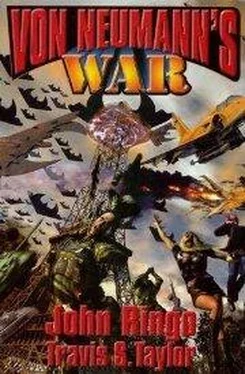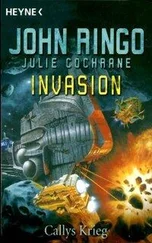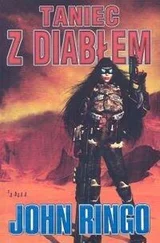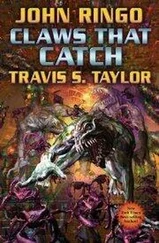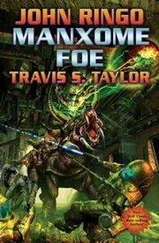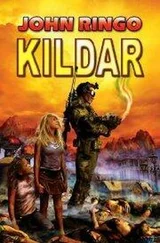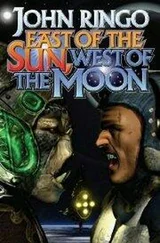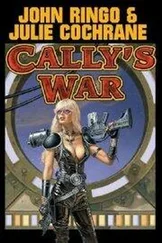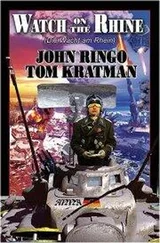“I can see where you’re going with that,” Roger said, nodding. “Figure out a way to get them to stick it to them and attach it to something.”
“Have to be a pretty strong something,” Tom pointed out. “I’m not sure what the energy budget of these things is but they can fly into and out of a gravity well. That means one hell of a lot of pull.”
“I wonder how resistant to electricity they are?” Alan asked. “Get them to stick to a live wire?”
“They’d just eat the wire,” Cady pointed out.
“Coyote glue was really, really weird,” Shane said. “DuPont had come up with it. One of those things like super putty. They were working on something else and got this. It’s an adhesive, very sticky, but it’s elastic as well.”
“Like the Coyote gets his foot stuck and it pulls back?” Alan asked, grinning. “Tries to pull it off with his hand and gets the hand stuck?”
“Just like that,” Shane said, smiling back with a nod. “It only starts to set when it hits air and it never really gets hard or dry. Just… stays sticky for a long time. They wanted to use it for a crowd control system. The current glue they use for that, if it gets over a person’s face they suffocate. They were pretty sure they could tinker Coyote glue so a person could pull it away from their face but not get entirely away. But I was thinking…”
“Put out a trap with some of it,” Roger said, nodding. “They get stuck to it. Like flies on a spider web.”
“Energy budget again,” Alan pointed out sourly, looking over at Tom. But Tom was clearly gone somewhere, with an abstracted expression on his face.
“Yeah,” Roger argued. “But you can tinker that. Admix some high strength materials in it like Spectra 1000 fishing line. Give it a good foundation, just a big ass concrete slab.”
“It’s really elastic,” Shane pointed out. “Really, really elastic. I could see one of these things, well, pulling really hard. And then getting pulled back just as hard.”
“Okay, we’ve got some good stuff here,” Roger said, nodding. “The probe mines—”
“And potato guns,” Alan pointed out.
“And… low velocity kinetic bombardment devices,” Roger said, writing carefully. “What’s the status on Gecko-Man materials?”
“They’re going to need funding,” Shane said. “Fast and a lot. Hell, with all the money flying around they might have gotten it already.”
“We’re up on that,” Roger said, nodding and making a note.
“Spring traps,” Cady interjected.
“Say again?” Roger asked.
“The super Velcro,” the sergeant major said. “Think about, oh, I dunno, a ball of this gecko stuff. With some metal in the middle and some sort of plastic spring thing or a bungee cord. The metal releases the plastic spring. They pull it up, the spring goes off, they’re wrapped in super Velcro. I’m not sure what happens then…”
“Bombs,” Shane said. “They’re tied to something. You name it.”
“Spring traps,” Roger said, making a note. “Proximity fuses. Coyote glue.”
“They’ve got some high falutin’ name for it,” Shane said. “But that’s what all the engineers called it.”
“Ceramic scramjet rounds,” Roger said. “Directed energy weapons.”
“Staffs,” Cady insisted. “Everybody gets a big stick.”
“I’ve got a friend who’s into that SCA stuff,” Alan said. “I’ll get you a good one.”
“Thanks.”
“Spikes!” Tom said, excitedly.
Roger and Alan just looked at him, used to the sudden apparent nonsequiturs, but Cady and Shane were clearly confused.
“Volleyball?” Shane asked. “Like hit volleyballs at them really fast?”
“No,” Tom said. “Although it’s a thought. Take some of your Coyote glue. Make a holder with a carbon fiber spike in it. Bait it with metal. Attach it to something strong, but not incredibly strong. Maybe put a capacitor on the spike. The probe grabs the bait, pulls away, can’t, pulls harder, the attachment breaks, the spike goes through the probe and it’s history. Then we study it.”
“I can see that,” Alan said. “We could get one to study that way, assuming we can keep the others off.”
“Surround one of those traps with mines?” Cady asked. “Winner of the mine avoidance contest gets to be dissected?”
“If it’s a small swarm that might work,” Shane said. “As tactics if not strategy.”
“Okay, I’m gonna write up the notes and send it to the working group,” Roger said. “We’ll have to see what happens on communications when they get here. This is even going to screw Internet communications.”
“Oh, that’s another thing,” Shane said. “They zero in on RF. Anything broadcasting gets eaten. Fast.”
“Very important note,” Roger said. “Let’s take a break while I get this out and then we’ll come back and look at some of these ideas in more depth.”
“You think any of this is gonna work?” Cady asked Shane as they filed out of the room.
“It’d take a miracle.”
* * *
“It’s gonna take a miracle,” Alan handed Roger the latest CASTFOREM models that had been tailored to Gries’s and Cady’s debriefing information.
“Red consumes blue,” Roger read the printout and sighed as he tossed it onto his desk.
“Yeah, it just took a little longer this time.” Alan made a Jetson’s car sound with his lips as he plopped onto Roger’s couch and lay back with his hands behind his head and his feet propped up.
“What would you do, coach?” He glanced at his autographed picture of Coach Paul “Bear” Bryant on his office wall and muttered to himself.
Alan smiled in response. “He’d probably call for a run right up the gut.”
Roger grinned and nodded in agreement.
“The problem with all these great ideas Alan, is scale.” Roger toggled the Mathcad simulation on his laptop to calculate and then kicked back in his chair. He considered spinning his little desk gadget but thought better of it.
“What do you mean, Rog?”
“Well, Gries and Cady were thinking tactically about how to kill one or a few of these things. We need to kill billions of them. We need to be thinking strategically. And a potato gun just will not do it. Even the supersonic F-16s and missiles only made a microscopic dent in their population before being destroyed. That reminds me; get somebody making completely composite fast airplanes. Don’t know how to power them, but get somebody on it.” Roger shook his head at the graph that was drawing on his computer screen. Alan rose up and took his little notepad from his belt, grabbed the stylus, and jotted some notes down.
“Well, the ideas may only be a drop in the bucket or spit in the ocean, but it’s a start.” Alan shrugged as he continued jotting notes. “We can’t just sit around and do nothing.”
“Sure, but according to my calculations here, which consider death and growth rates of the probes, we would need a million potato guns with thousands of rounds each to keep up. Looks like CASTFOREM agrees with me.” The temptation overwhelmed Roger and he decided to spin the little space shuttle gadget. He flicked it with his index finger and it went spinning.
“So, we make that many. And I’ve already figured that out. We don’t use potato guns — well, maybe a few as larger grenade launchers. Instead we use paintball guns. Sarge and I’ve found three different manufacturers of them that can make canned air powered full auto systems that fire up to fifteen balls per second. The balls just have a liquid paint in them anyway so…” Alan paused and looked up from his PDA to see if Roger was paying attention. “So, we fill them with a high explosive. And here is the good part. I only had to come up with two very simple modifications to make them completely out of a carbon polymer material. No metal. And Sarge found one company — couple of enthusiasts really — that has a minigun that can fire nearly three hundred rounds per second!”
Читать дальше
